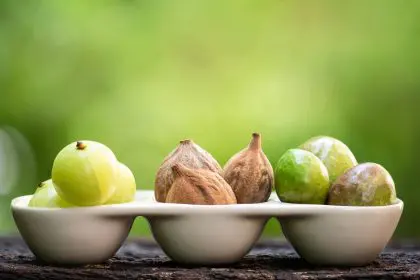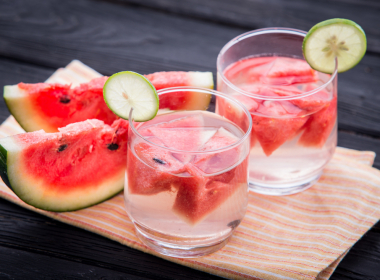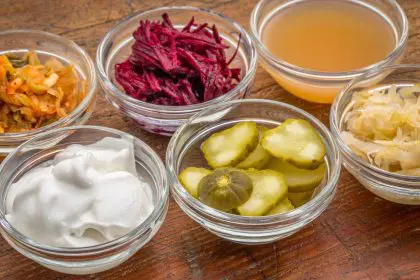Fruits stand as nutritional powerhouses, delivering essential vitamins, minerals, antioxidants, and fiber that support overall health. However, consuming certain fruit combinations might trigger digestive issues for some people. These reactions don’t mean the fruits themselves are harmful—rather, their interaction with each other or with your unique digestive system can create uncomfortable symptoms. Understanding these potential interactions helps you make more personalized choices about your fruit consumption patterns.
1. Melons paired with other fruits
Melons, including watermelon, cantaloupe, and honeydew, digest differently than most other fruits. They break down quickly and move through the digestive tract at a rapid pace. When combined with slower-digesting fruits, melons can get “trapped” behind these foods in the digestive process.
This digestive traffic jam can lead to fermentation in the gut as the melon sits waiting to continue its journey. For sensitive individuals, this fermentation process produces excess gas, bloating, and discomfort. The trapped melon may also begin fermenting, creating alcohol compounds that further irritate the digestive lining.
The speed difference becomes particularly problematic when melons are consumed with dense fruits like bananas, apples, or pears. For optimal digestion, enjoy melons alone as a snack or at least 30 minutes before consuming other fruits or foods.
2. Acidic and sweet fruits together
Mixing highly acidic fruits like oranges, pineapples, and grapefruits with very sweet fruits such as bananas, dates, or mangoes can create a challenging digestive environment. These fruit types require different enzymatic processes for optimal breakdown.
Acidic fruits need acidic digestive enzymes, while sweet fruits rely more heavily on alkaline digestive secretions. When consumed together, these competing needs can neutralize each other’s digestive environment, slowing down the overall process.
This inefficient digestion often leads to fermentation in the gut, creating symptoms like bloating, gas, and stomach cramping. For those with sensitive digestive systems or conditions like irritable bowel syndrome, this combination may trigger more severe discomfort.
Some particularly problematic pairings include orange juice with banana, grapefruit with mango, and pineapple with dates. Spacing these fruits at least an hour apart can help avoid these digestive conflicts.
3. Tropical fruits with dairy products
While not strictly a fruit-fruit combination, the pairing of tropical fruits like pineapple, mango, or papaya with dairy products deserves mention for its potential digestive impact. Many tropical fruits contain proteolytic enzymes—compounds that break down proteins.
Pineapple contains bromelain, papaya contains papain, and mango contains manginain. When these enzymes encounter the proteins in dairy products, they begin breaking them down before your digestive system processes them properly.
This premature protein breakdown can create strange textures in the mouth and stomach while potentially triggering digestive discomfort, including cramping and diarrhea in sensitive individuals. Additionally, the acidic nature of tropical fruits can curdle dairy products in the stomach, further complicating digestion.
Common problematic pairings include mango lassi (though traditional preparation methods minimize issues), pineapple with yogurt, and papaya in milk-based smoothies. Separating these foods by at least two hours helps prevent negative reactions.
4. Bananas combined with guava
This specific fruit combination poses issues due to their contradictory effects on stool consistency and bowel movements. Bananas, particularly when slightly underripe, contain resistant starch and tannins that can create constipating effects in many people.
Guava, conversely, contains compounds that stimulate bowel movements and can have a mild laxative effect due to its high fiber content and specific enzyme activity. When consumed together, these opposing digestive influences create confusion in the digestive tract.
Some individuals experience alternating constipation and loose stools after consuming this combination. Others report uncomfortable bloating as the digestive system struggles to regulate motility with these conflicting signals.
This pairing becomes particularly problematic when consumed on an empty stomach or as the first meal of the day when digestive processes are more sensitive. Eating these fruits at least three hours apart helps avoid this digestive contradiction.
5. Multiple high-fructose fruits in one sitting
Consuming several high-fructose fruits together can overwhelm the body’s fructose absorption capacity, particularly in people with fructose malabsorption issues. Fruits especially high in fructose include apples, pears, watermelon, mango, and cherries.
When fructose consumption exceeds absorption capacity, the excess sugar remains in the intestines where gut bacteria ferment it. This fermentation produces gases including hydrogen, methane, and carbon dioxide.
The resulting symptoms include painful bloating, excessive flatulence, stomach cramping, and sometimes diarrhea. For those with fructose sensitivity or irritable bowel syndrome, these symptoms can be severe enough to disrupt daily activities.
Instead of consuming multiple high-fructose fruits together, pairing one high-fructose fruit with a lower-fructose option like berries, citrus fruits, or kiwi creates a more manageable fructose load. Spreading fruit consumption throughout the day rather than consuming large amounts at once also helps prevent overloading fructose absorption pathways.
6. Citrus fruits combined with berries
The combination of citrus fruits (oranges, lemons, limes, grapefruit) with various berries (strawberries, blueberries, blackberries) creates a highly acidic environment that can trigger discomfort for those with acid sensitivity issues.
Both fruit types contain significant organic acids—citrus fruits are rich in citric acid while berries contain variable amounts of malic, citric, and ellagic acids. When consumed together, they create an acid load that can overwhelm the digestive system’s buffering capacity.
For individuals with conditions like gastroesophageal reflux disease (GERD), gastritis, or sensitive stomach linings, this acid combination frequently triggers heartburn, reflux, and stomach pain. The high acid content may also interfere with the absorption of certain minerals by binding to them in the digestive tract.
This combination becomes particularly problematic in juice form, where fiber is removed and acid concentration increases. Consuming these fruits separately, preferably with some fat-containing food to buffer the acid, helps minimize digestive distress.
The science behind food combining theories remains somewhat controversial in mainstream nutrition. While some digestive principles are well-established—such as the different enzymatic environments needed for various foods—many food combining theories lack rigorous scientific verification.
However, many nutritional practitioners and traditional medicine systems have long observed that certain food combinations create digestive challenges for sensitive individuals. The keys to determining which combinations affect you personally include careful observation, possibly keeping a food journal, and being mindful of timing.
Not everyone experiences problems with these fruit combinations. Factors influencing your reaction include your microbiome composition, digestive enzyme production, gut transit time, and any underlying digestive conditions. If you consistently notice discomfort after consuming certain fruit combinations, your body may be telling you something worth hearing.
Rather than avoiding fruits altogether, experiment with timing, quantities, and combinations to find what works best for your unique system. The tremendous nutritional benefits of regular fruit consumption make this personalization effort worthwhile for long-term health and comfort.

















